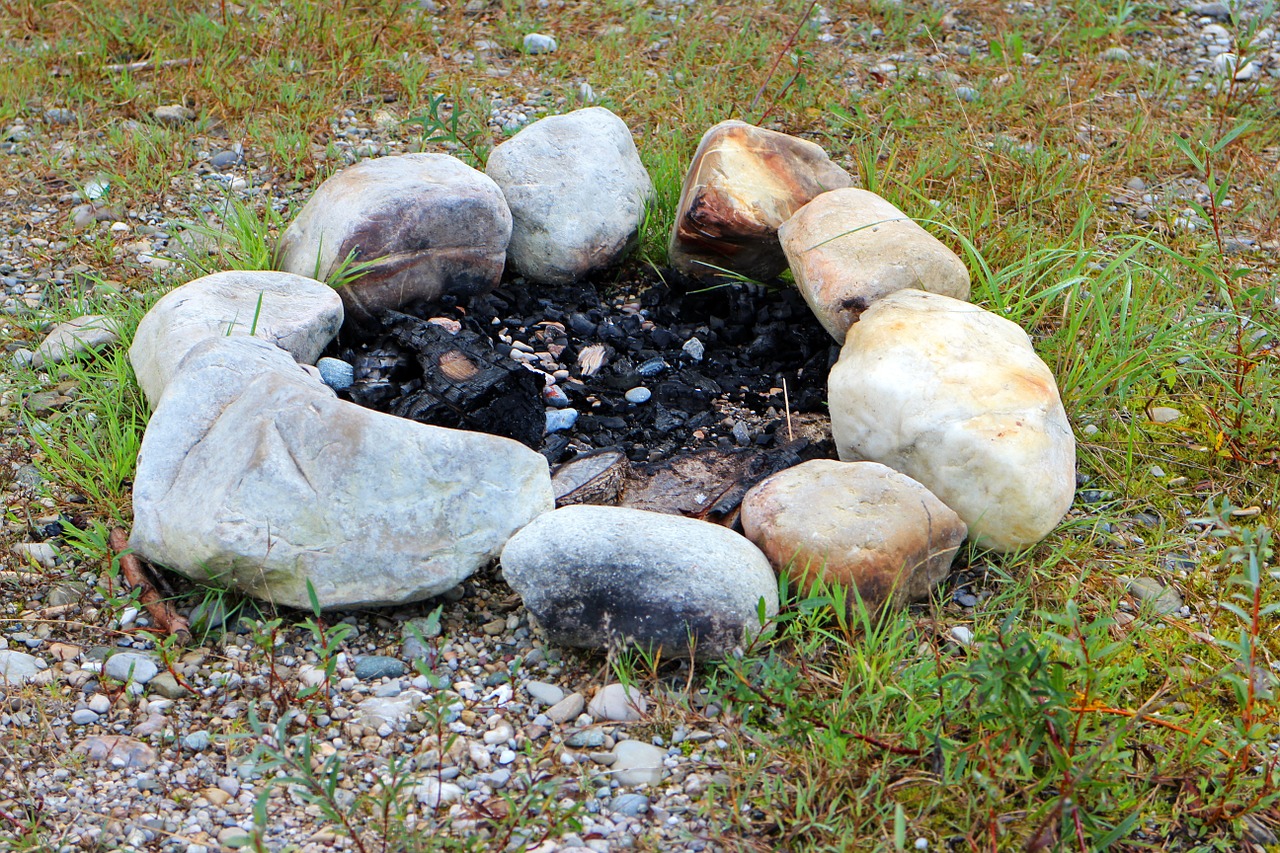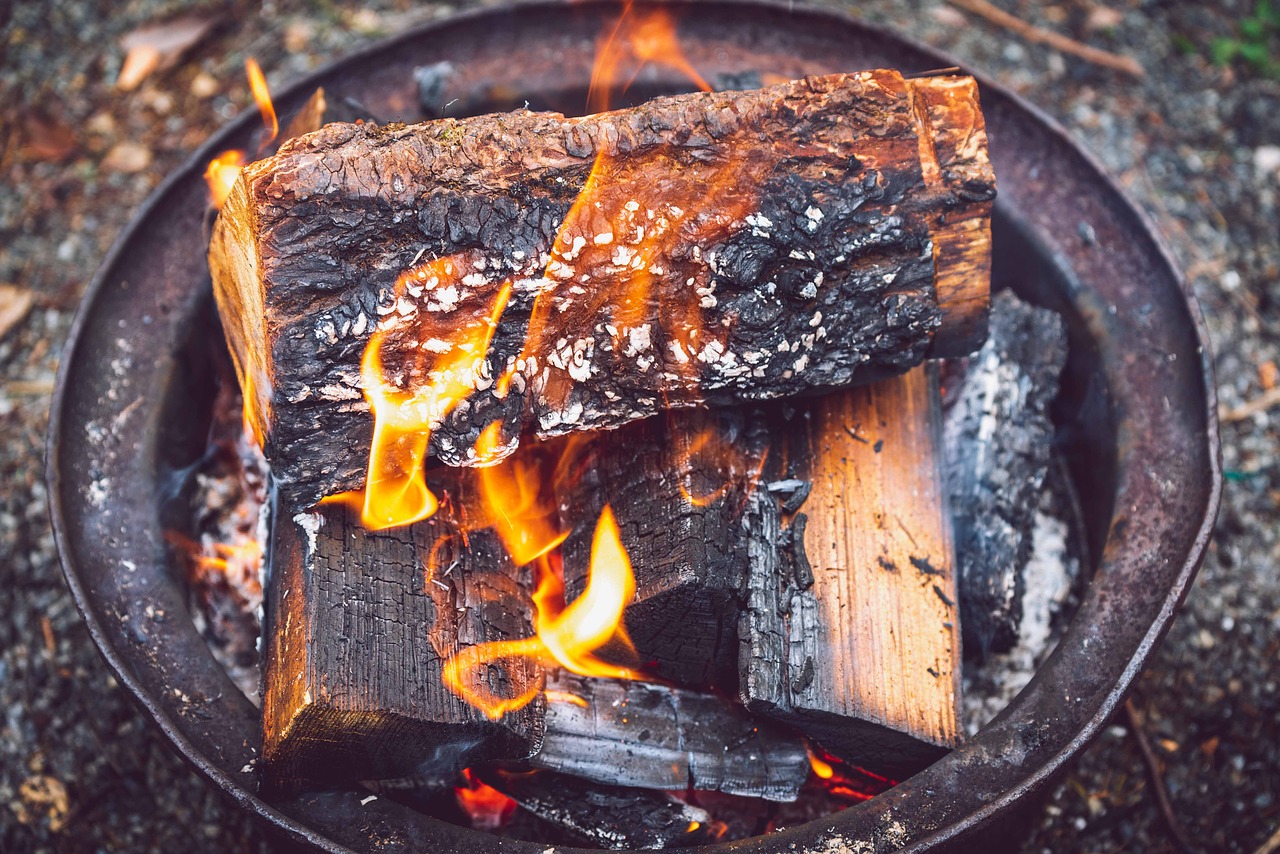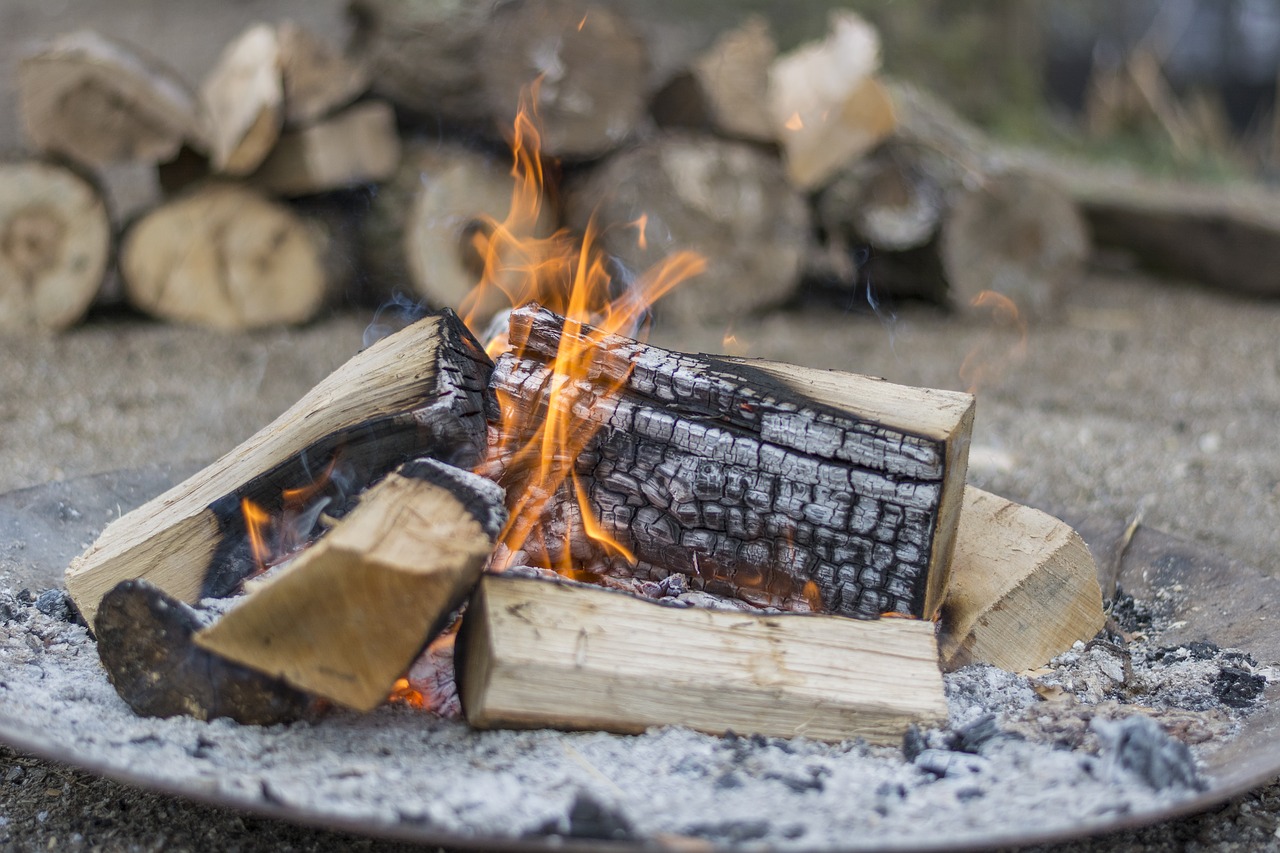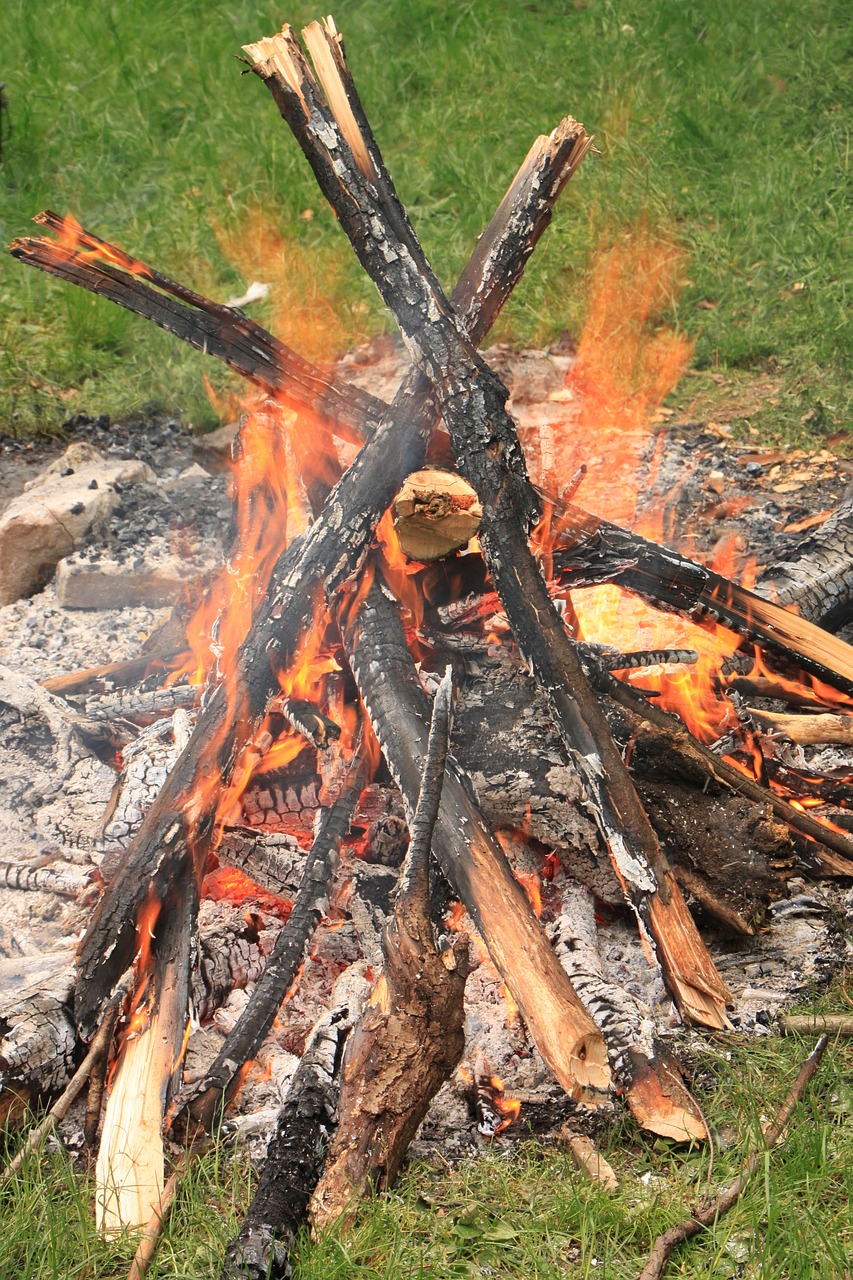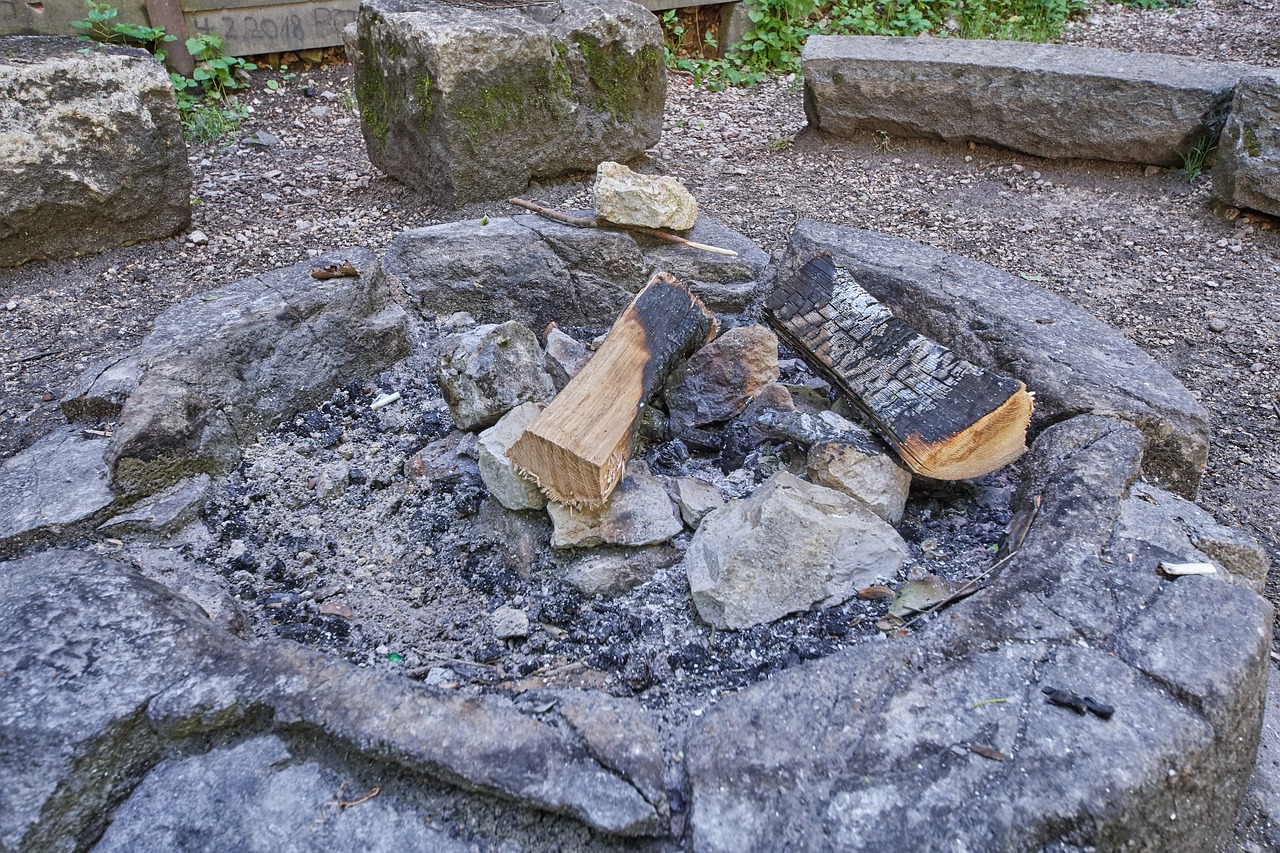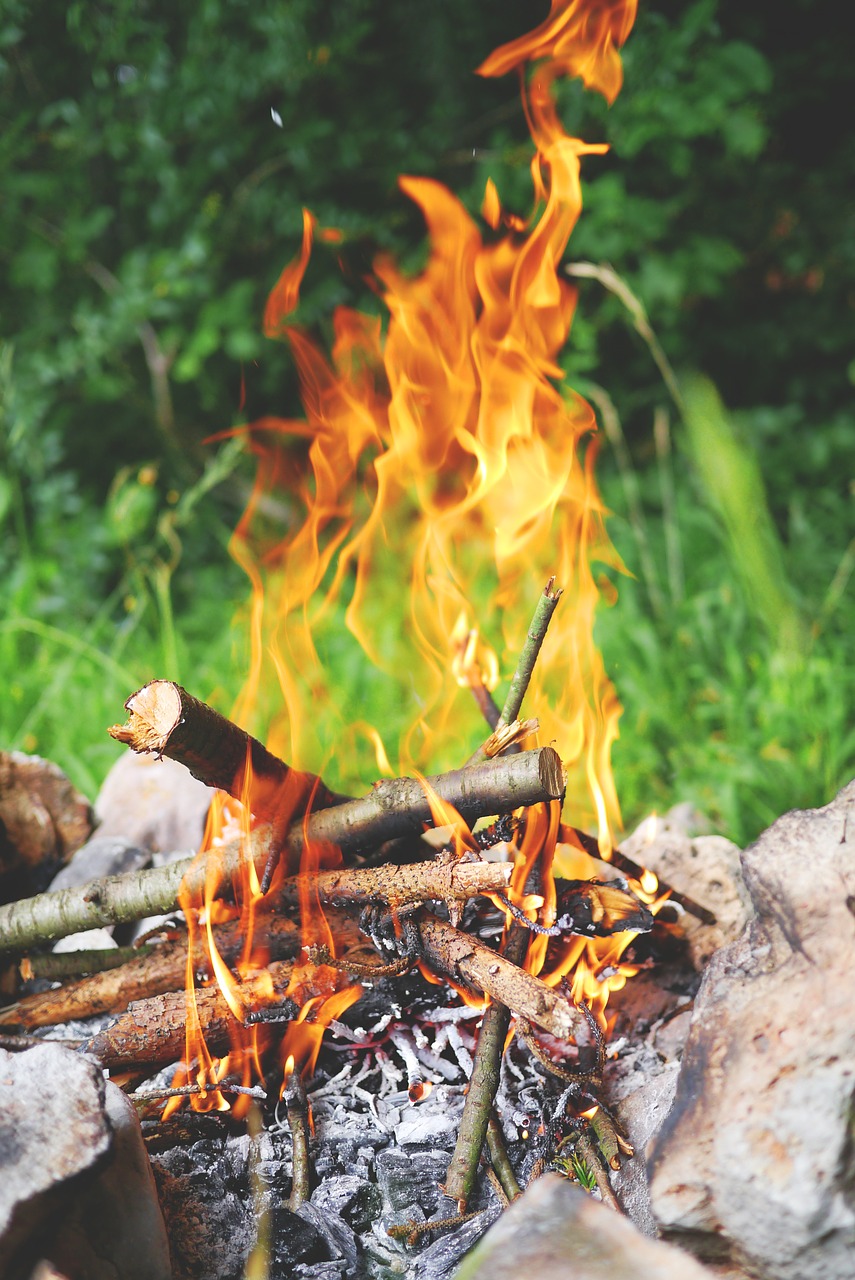
Safety First
NEVER, NEVER, NEVER pour flammable fluids onto a flame or source of heat. The fluid can ignite and the flame can (and probably will) run right up the stream of fluid to ignite the container in your hand, with explosive and extremely harmful (if not fatal) results.
NEVER, NEVER, NEVER leave a fire unattended in any stage between lighting and extinguishing. DO NOT go to bed while there is any fire or glow visible in your pit or ring. Left unattended, open flames or glowing coals (even ash-covered embers that don't appear to be glowing) can very easily lead to a spreading fire.
ALWAYS be aware of your hair or clothing when working with a fire. Tie your long hair back securely and roll up loose sleeves.
ALWAYS be aware of the prevailing wind or gusty weather. Watch to make sure that the wind doesn't blow your campfire flames dangerously close to flammable materials - Your tents !
ALWAYS be aware of the presence and actions of others around your campfire, especially small children or inebriated adults. :-~

